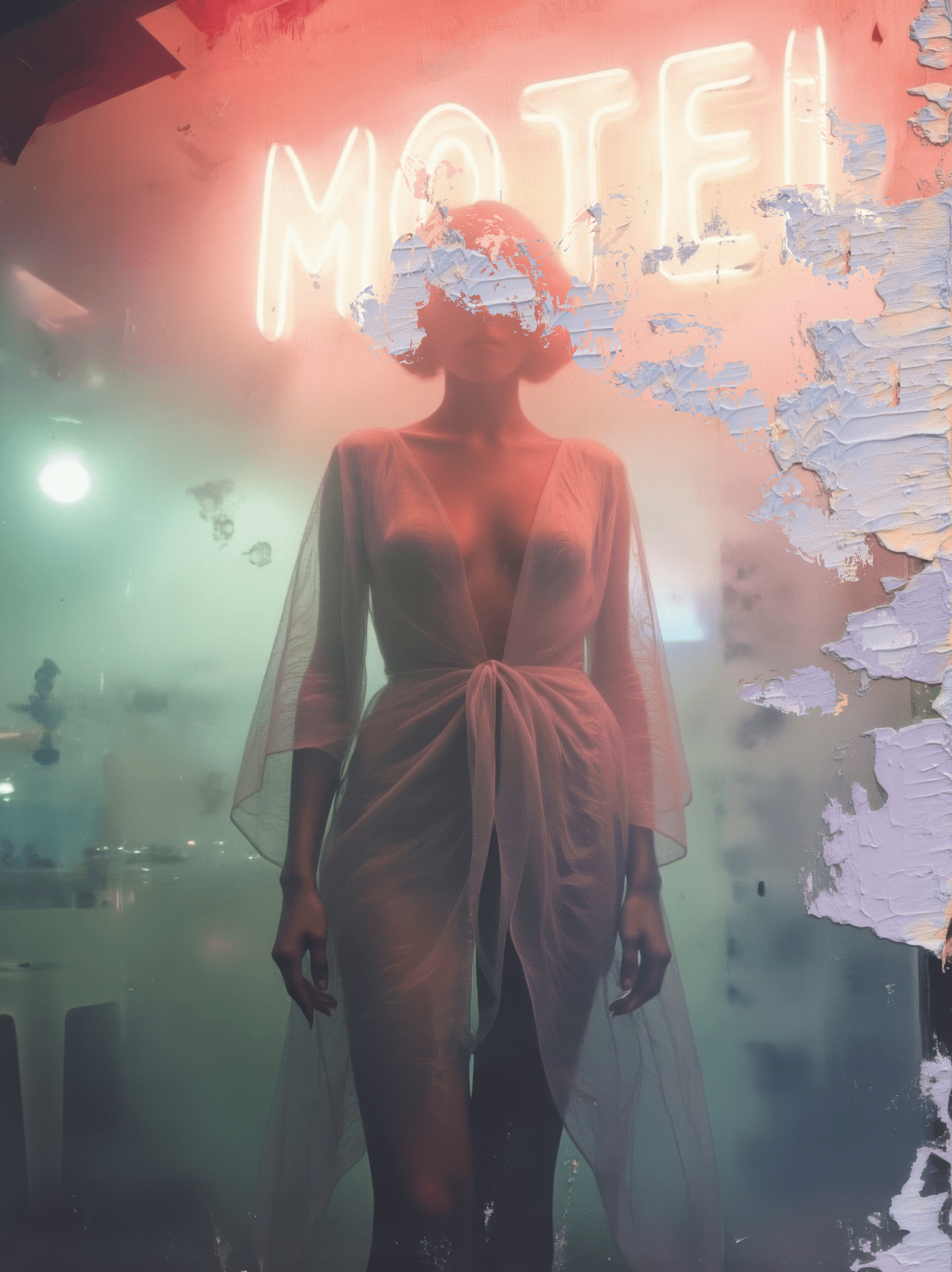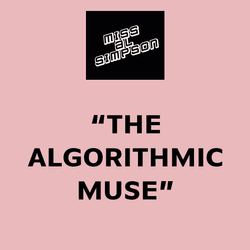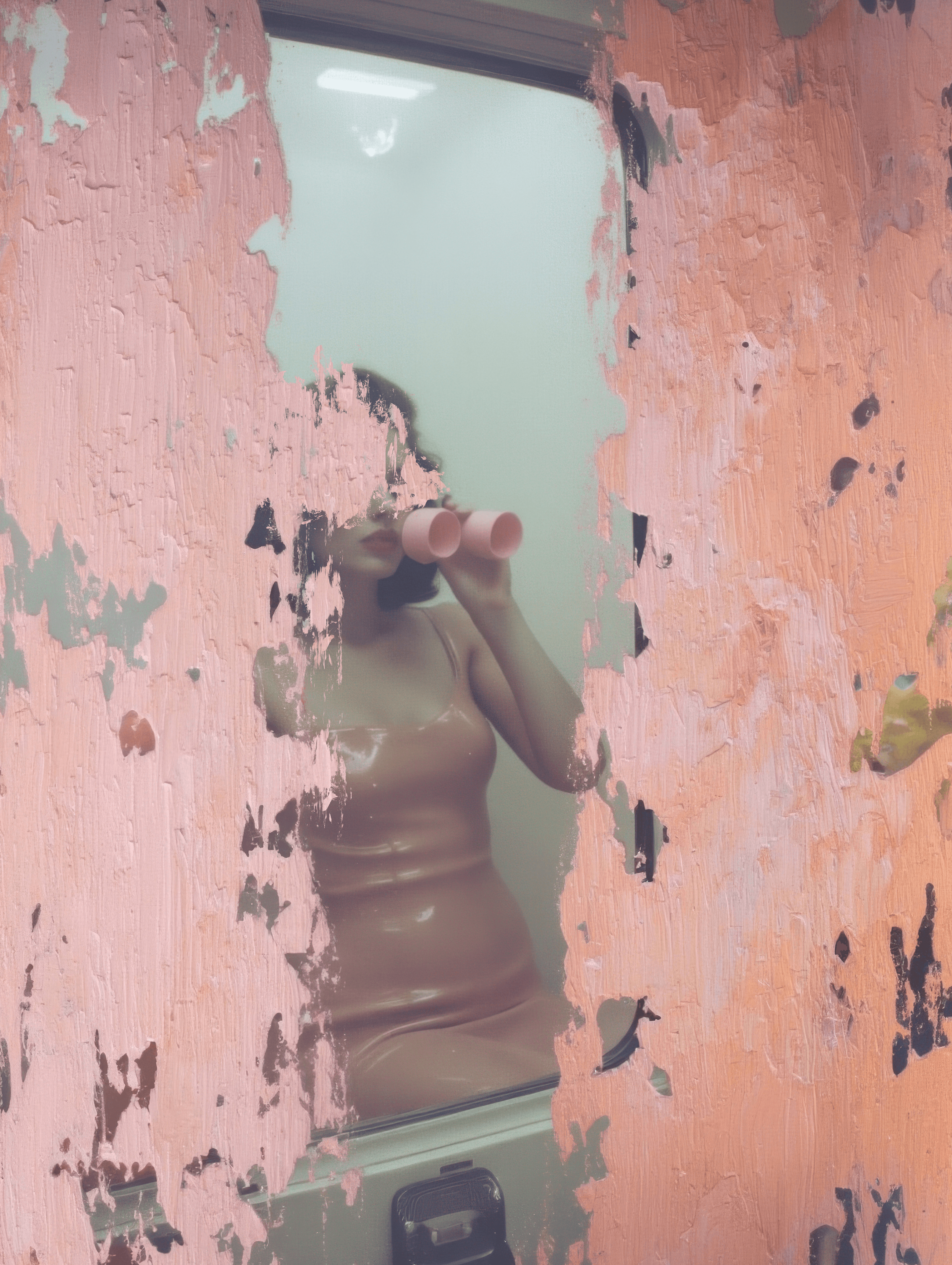
This latest collection by Miss AL Simpson is a series that challenges the boundaries with Simpson's desire to paint algorithmically by training the machine. By training her AI model, she has ventured beyond conventional methods, exploring the full potential of artificial intelligence as a true creative collaborator. Here, AI is not simply a tool—it emerges as an essential partner in the artistic process, helping to craft an entirely new genre of overpainting. In this genre, the concept of paint itself is fundamentally reimagined: rather than organic pigments, the "paint" is composed of digital algorithms—lines of code that instruct the machine in how to layer and construct an image. This lends Simpson's work an ethereal, spectral quality where each stroke is made not from matter but from data, existing in a realm beyond physicality.
In these works, the act of overpainting does not follow creation sequentially; rather, it occurs simultaneously by AI with the formation of the underlying image, resulting in a unified artwork where abstraction and realism are interwoven from the outset. This simultaneity created by the machine, brings a palpable tension to the work—a tension that is rich, subtle, and deeply sensitive. Simpson’s AI overpainting is not composed of material substance but rather digital instructions, existing in a strange new grey area that challenges our conventional understanding of the medium. This algorithmic paint behaves unlike any traditional medium: its transparency and intangibility add a dreamlike quality, one that fits an imagined, transient Los Angeles populated by fleeting cars, motels, and fragmented figures that seem to shimmer between presence and absence.
The color palette furthers this exploration of duality—delicate pastels coexist with vivid, unapologetic strokes that blur the line between sensitivity and audacity. In the traditional studio, pastel hues are notoriously challenging to mix, but here, Simpson allows AI to freely blend a spectrum of pastel tints. This exploration is directed by Simpson in collaboration with AI, resulting in an intricate dance between control and spontaneity, intent and serendipity. This dynamic is particularly evident in the fragmented figures that inhabit these works—figures that, at times, are sharply defined and, at others, dissolve into the digital ether, as if the AI itself is choosing when to maintain structure and when to let it drift into abstraction.
Such moments, when the image dissolves entirely into abstraction, are where the AI’s true unpredictability comes to the fore. The abstracted outcomes are often surprising, as they seem to transcend Simpson’s training, creating compositions that feel almost autonomous, as if the AI is acting on its own creative impulse. This dissolution introduces a sense of mystery—a confrontation with the enigmatic nature of machine creativity, where meaning hovers between the recognizable and the ungraspable.
In "The Algorithmic Muse," technology becomes a poetic force. The AI itself embodies the qualities of a muse, inspiring and responding to Simpson’s direction in ways that push the work into uncharted artistic territories. Through this collaboration, Simpson has developed an entirely new approach—painting algorithmically by guiding the AI to digitally push the paint across the surface; a surface that she has forced the machine to create, creating both structure and erasure simultaneously. The result is a body of work that interrogates the nature of overpainting, the essence of paint itself, and the evolving role of the artist when confronted with the near-limitless potential of machine intelligence.
This collection challenges the boundaries between the tangible and the intangible and the organic and the algorithmic.
Simpson's work urges both artists and audiences to embrace the unknown, to immerse themselves in the unfolding dialogue between human imagination and artificial intelligence. Here, the brush is no longer confined to the artist's hand—it is shared with the complex, evolving intelligence of the machine.
The Algorithmic Muse not only redefines what paint, canvas, and artistry can be, but it also challenges us to envision a world where the human spirit and artificial intelligence coexist harmoniously, creating beauty that neither could achieve alone. This collection is a profound statement of what happens when the boundaries of art are pushed, and when creativity itself is reimagined in the digital age. The future of art is here, and it is full of endless, algorithmic possibilities.

